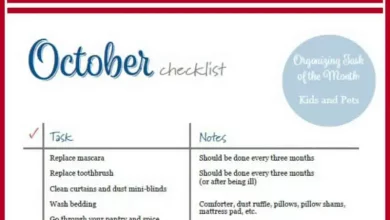Do tomatoes grow better in a greenhouse or outside?

Humans need tomatoes, therefore the greenhouse tomato business was founded. Until recently, this popular fruit was either imported from Mexican producers or cultivated as greenhouse tomatoes in California or Arizona. Growing tomatoes in a greenhouse isn’t for the faint of heart; they require specific greenhouse tomato plant care entirely different from other crops. If you’re interested in trying your hand, read on to learn how to grow tomatoes in a greenhouse.
Contents
About Greenhouse Tomatoes
Growing tomatoes in a greenhouse is a great way to extend the season either due to a short growing season in your region or because you’d like to get a second crop. In certain areas, the window of opportunity for growing tomatoes is limited, leaving people yearning for vine-ripened tomatoes. Here is where the benefits of greenhouse-grown tomatoes shine.
Growing tomatoes in a greenhouse or high tunnel can extend the harvest season by several months up into late fall but that isn’t the only benefit. It also protects them from rain, which may promote fungal illness.
To maintain their produce, commercial greenhouse tomato farmers go to tremendous lengths and cost. While some are cultivated on soil, the majority are grown under hydroponics. Most are handled naturally, with no pesticides or synthetic fertilizers used. Also, since the plants are produced inside, they need assistance with pollination. Some growers bring in bumblebees, while others vibrate the plants manually to move the pollen to its receptor.
Home gardeners may attempt to replicate these circumstances as well, but it will need some effort and dedication, but hey, a longer tomato season makes it all worthwhile!
How to Grow Tomatoes in a Greenhouse
First of all, to produce fruit, the temperature of the greenhouse should be 60-65 F. (15-18 C.) at night and 70-80 F. (21-27 C.) during the day. Depending on your location, this may need chilling the greenhouse during the day or warming at night.
Air circulation is also necessary, which is supplied by exhaust fans and optimum plant spacing. Circulation helps maintain a constant humidity level and reduces the incidence of disease.
Plan on establishing a two-crop rotation to obtain the most tomatoes and really lengthen the growing season. This means that a fall crop is seeded in early July or by early June and a spring crop is seeded in December to mid-January.
Between pairs of tomato rows that are 28-30 inches (71-76 cm.) apart, there is usually around 36 inches (91 cm.) of work area.
Transplants should be placed in damp soil about a half inch (1.3 cm) above the previous soil line. Install a trellis structure before the plants reach a height of a foot. Plastic twine is usually attached from the plant to a large gauge wire support hung above the row.
Greenhouse Tomato Plant Care
Train the tomatoes by eliminating any broad branches as soon as they appear in the leaf axils, which is normally once a week.
Commercial tomato growers may use electric vibrators, electric toothbrushes, and mist blowers, knocking the support wires or other automatic shakers to distribute pollen. Depending upon how many tomatoes you plan on growing, hand pollinating with a simple transfer of pollen with a very light brush or cotton swab will suffice. It may take some time, but without pollen transmission from the anthers to the stigma, there will be no fruit. Every other day, pollinate.
As fruit is produced, thin to 4-5 fruit per plant when they are small. Lower leaves should be removed to improve air circulation and prevent disease incidence.
Be care to water the plants often. Start either weekly sprays or biological controls the moment the plants are in the greenhouse to get a jump on potential problems.
Finally, maintain precise records with full dates, cultivar names, and any other specific concerns.
Related Questions
-
Is it best to grow tomatoes outside or in greenhouse?
Tomato plants may be planted outdoors after all danger of frost has gone, but they will thrive if maintained in a greenhouse or inside overnight until summer, when daytime temperatures do not fall below 17 degrees Celsius.
-
Will tomatoes grow faster in a greenhouse?
Raising tomatoes in your Planta-greenhouse offers higher harvests all year. Greenhouse tomatoes yield 10 to 20 times more fruit than field tomatoes. During the warmer months, you are not bound to a single growth season.
-
What is the most efficient way to grow tomatoes?
More Sun Equals More Fruit
Plants should get seven hours of sunlight every day. Let your plants to develop as well. Put seedlings 30 to 48 inches apart, with rows separated by 48 inches. Allowing space between tomato plants allows light into the lowest regions of mature plants, improves air movement, and aids in disease prevention. -
Can you grow tomatoes all year round in a greenhouse?
While tomatoes may be produced in a greenhouse over the winter, the expenditures of heating and extra lighting, in addition to the greenhouse, can quickly mount up. Growing tomatoes in pots indoors is the most probable choice for enthusiasts who want fresh tomatoes all year.





